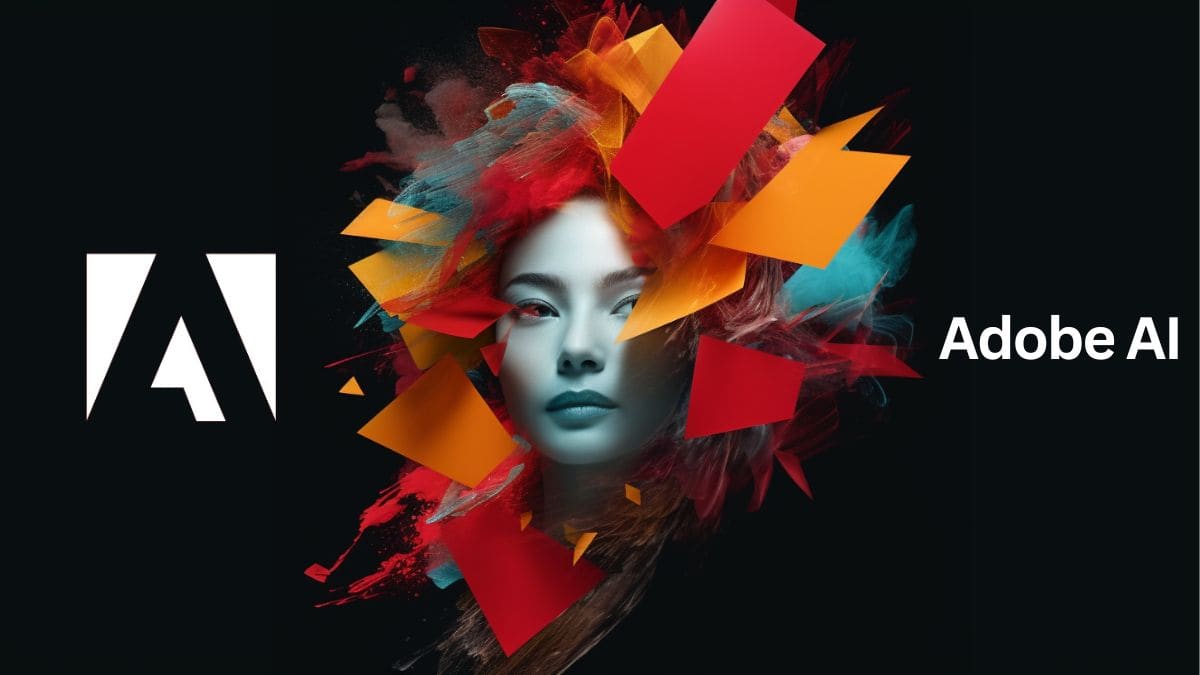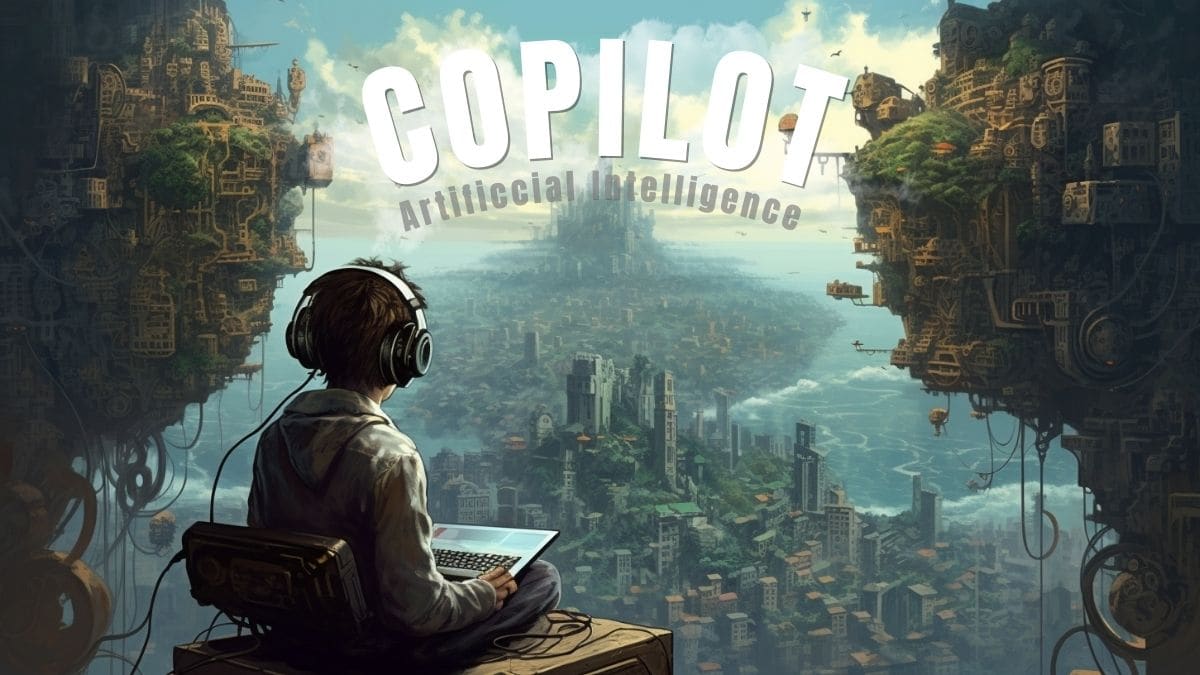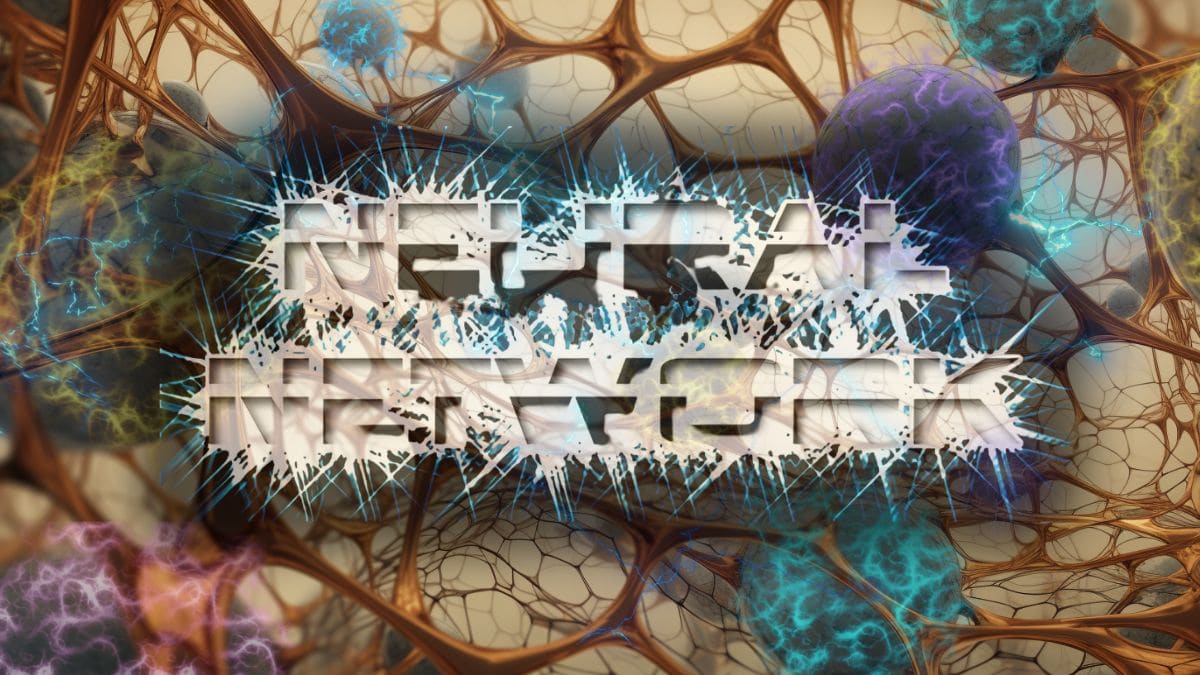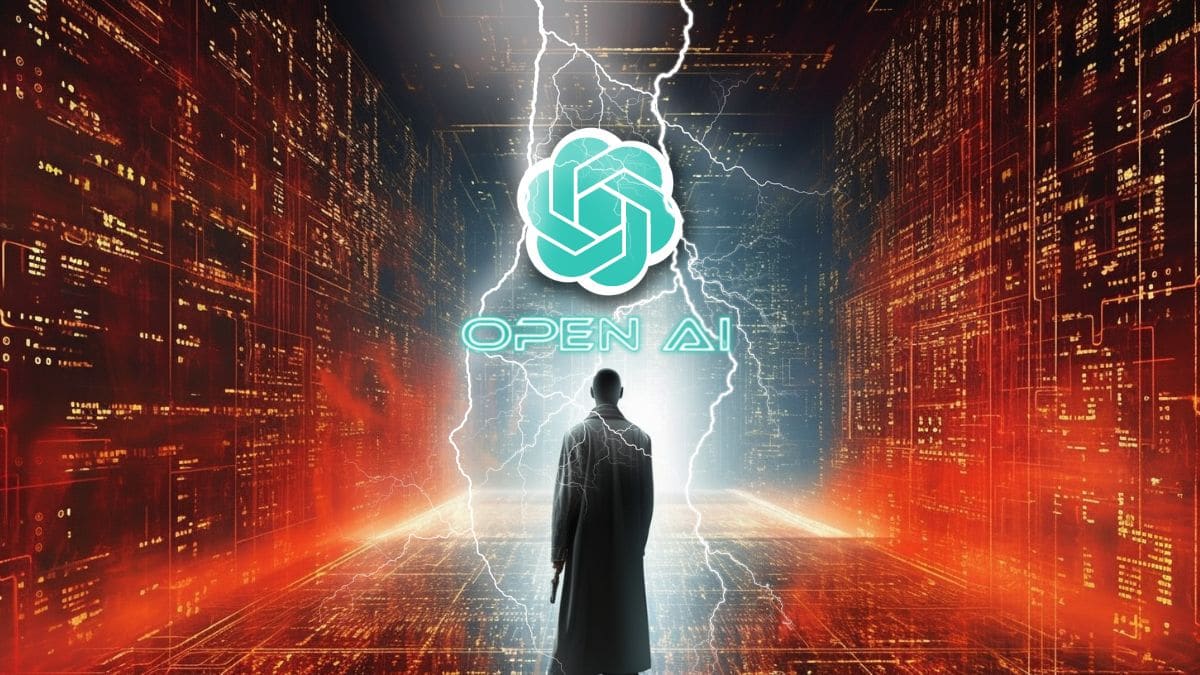
Jun 26, 2023
unlocking the power of hugging face ai in 2023
Imagine a world where artificial intelligence (AI) is accessible to everyone, empowering individuals and organizations to harness its power for various applications. In the realm of machine learning, the company Hugging Face AI has been striving to turn that dream into reality.,In this post, we will explore the fascinating world of Hugging Face and its contributions to the AI landscape, guiding you through the company and the exciting features and services they offer.,From the development of their comprehensive Hugging Face AI platform to their state-of-the-art Transformers library, Hugging Face has consistently pushed the boundaries of what's possible in AI. Join us as we delve into the Hugging Face universe, revealing how they have democratized AI and transformed the way we interact with machine learning models and datasets.,- Hugging Face is revolutionizing AI with powerful open source tools and resources.,- Hugging Face Hub provides an abundance of models, datasets & spaces for showcasing projects.,- The Transformers library offers efficient training on larger data sets, while HuggingChat enables custom chatbot creation to unlock the potential of conversational AI., ,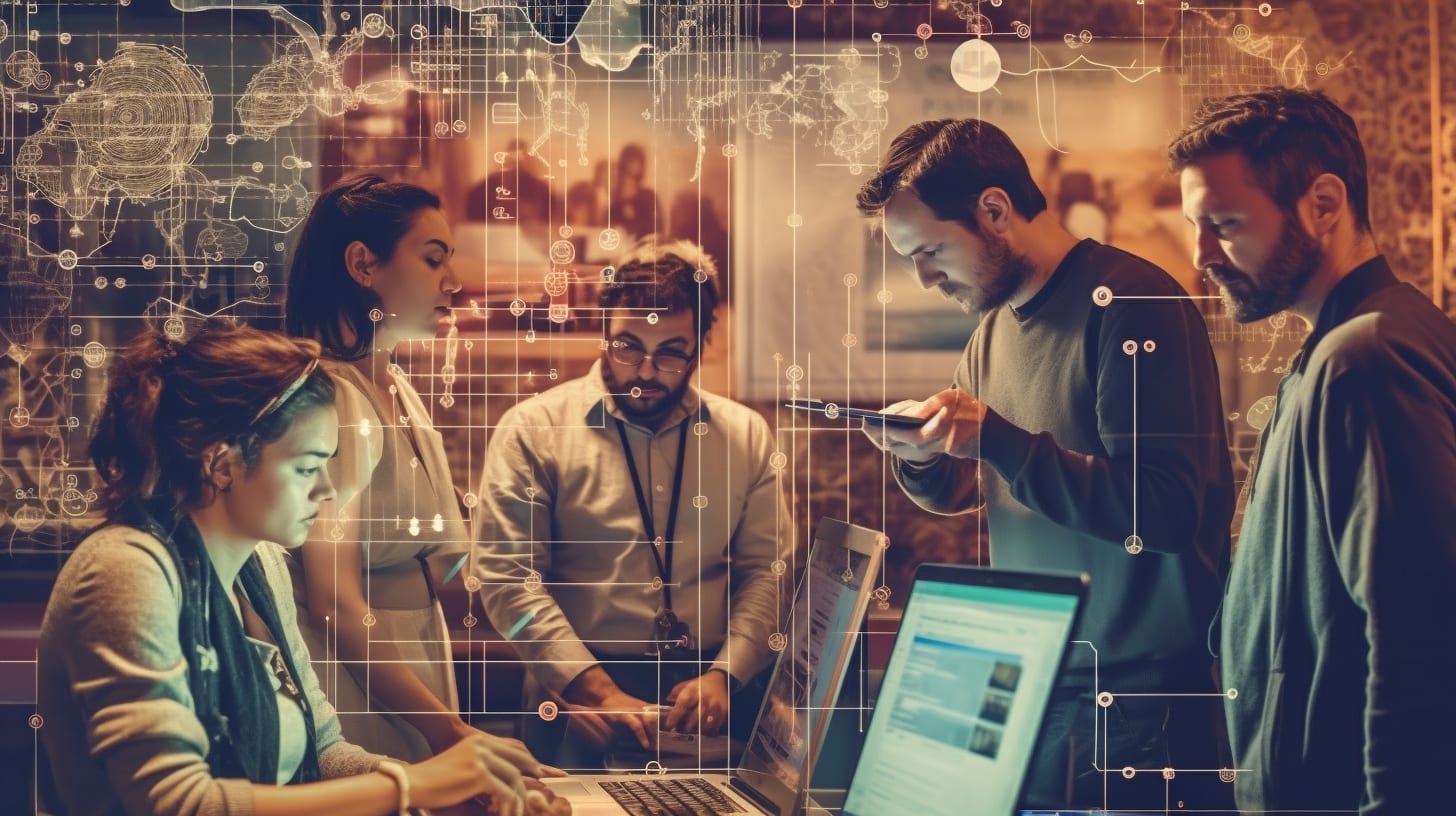,Hugging Face is a pioneering community and data science platform with the noble aim of making AI accessible to everyone by creating the most comprehensive library of models and datasets. With over 30 nationalities and 15,000 organizations utilizing its services, Hugging Face has transformed the machine learning landscape.,They offer an incredible array of tools, from their central place for models and datasets, the Hugging Face Hub, to their powerful Transformers library, empowering users to integrate AI into their products and workflows.,Hugging Face's mission is to revolutionize and make accessible the power of machine learning, one commit at a time. They build incredible open-source resources to help users easily harness the power of AI for their products and workflows, ensuring that AI can be accessible, optimized, and responsible.,This organization' bold mission and vision provide a solid foundation that supports for Hugging Face's ongoing commitment to innovation. With their continuous efforts to discover, collaborate, and contribute to the development of cutting-edge AI technology, they ensure that their platform remains at the forefront of AI advancements.,The AI community surrounding Hugging Face is passionate about advancing and democratizing artificial intelligence to benefit everyone through open source and open science. They are renowned for their Transformers library, built for natural language processing applications, and their platform that enables users to share machine learning models and datasets. Moreover, Hugging. Face is celebrated for being able to reduce training time, resources, and environmental impact of creating and training a model from scratch.,This vibrant AI community has created an incredible repository for sharing ML models and datasets, generously contributed by its members. By offering alternatives for each of the main tasks available in TensorFlow and other popular ML libraries, Hugging Face allows users to explore, experiment, and collaborate on a wide range of AI projects.,,The Hugging Face Hub is an amazing central place for easily sharing ML models files and datasets with powerful versioning and visibility control, providing an incredible platform for developers to share, discover, and collaborate on ML projects. With model repositories, dataset sharing, documentation and spaces for displaying projects, the Hugging Face Hub offers a wealth of opportunities for users to harness the power of AI.,The Hub provides a secure and reliable platform for developers to store and share their ML models, code and datasets. It also allows users to easily collaborate on projects, with versioning and visibility control to ensure that all changes are tracked and visible. With its powerful features, the Hugging Face Hub is an invaluable tool.,The Hugging Face Hub boasts an impressive collection of over 120k models, 20k datasets, and 50k demos stored conveniently in repositories. These repositories are filled with a wide range of models, such as language models, image models, and audio models, making it effortless to find the ideal model for a given task.,Using the model repositories offers numerous advantages. Not only do they provide an extensive selection of models, but they are also regularly refreshed with new models, ensuring that users have access to the most up-to-date models. This wealth of resources empowers users to achieve the best results in their AI endeavors.,Dataset sharing on the Hugging Face Hub is an exciting process of uploading datasets of various types, including text, audio, and image data, to the Hub for others to use and benefit from. This democratization of data promotes collaboration and innovation within the AI community.,Creating a new dataset on the Hugging Face Hub is easy! Click the '+ New' button from the Hub. Then select 'Dataset'. It's that easy! You can then specify the name, license type, and whether it's public or private access. After that, you'll be able to view the repository. It will be just like what you have in the Model repository, complete with a 'Dataset card' and 'Files and versions'.,Spaces are an incredible platform to demonstrate ML demo apps, allowing developers to showcase their projects and share them with the world. Hugging Face Hub Spaces support fantastic Python-based frameworks like Gradio and Streamlit for hosting your demo apps, providing an engaging way to present your AI creations.,Click the '+ New' button located in the Hub. This will enable you to select 'Space' and create a new one quickly and easily. This opens up a world of possibilities for sharing your projects, receiving feedback, and collaborating with the AI community to further enhance your work.,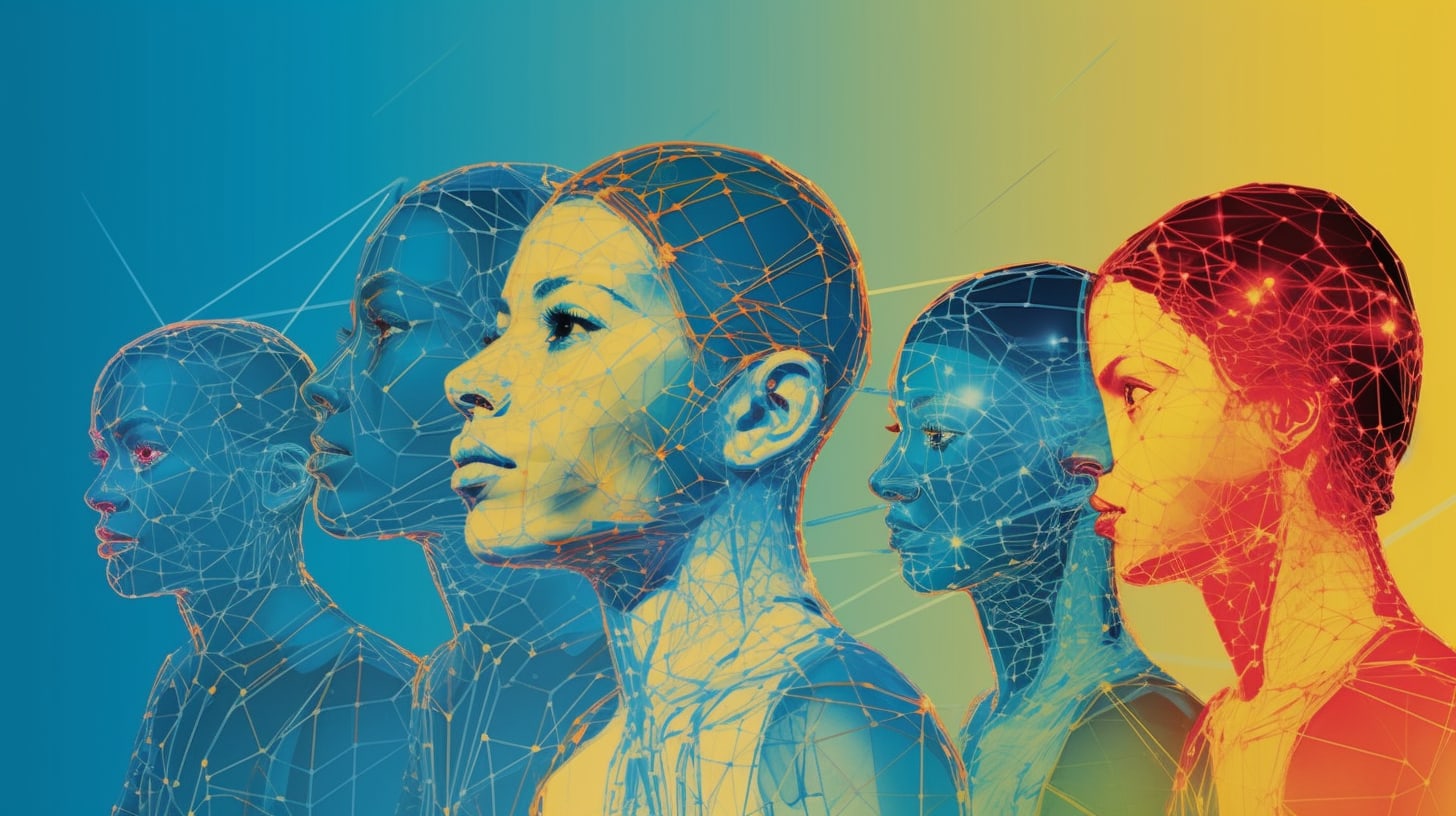,The Transformers library is a powerful tool for transforming code into AI, offering incredible features such as AutoModel, AutoTokenizer, and Trainer API, making it an invaluable resource for users to quickly and easily download and train state-of-the-art pretrained models for natural language processing and computer vision.,Seamlessly integrated with the Hugging Face Hub, the Transformers library simplifies the process for users to find and use the models and datasets they expect or need.,The Transformers library provides a suite of state-of-the-art models for various NLP tasks, including text classification, name generation, language modeling, name generation and question answering, containing over 30 pre-trained models and 100 languages. With eight major architectures for natural language and the ability to facilitate efficient parallelization during training, the library enables training on larger data sets while maintaining remarkable performance.,Leveraging the power of the Transformers library framework, users can stay on the cutting edge of AI technology. Its features enable prompt adaptation to new tasks and improvements in model performance, ensuring that your AI projects stay future-proof and relevant in the rapidly evolving world of machine learning.,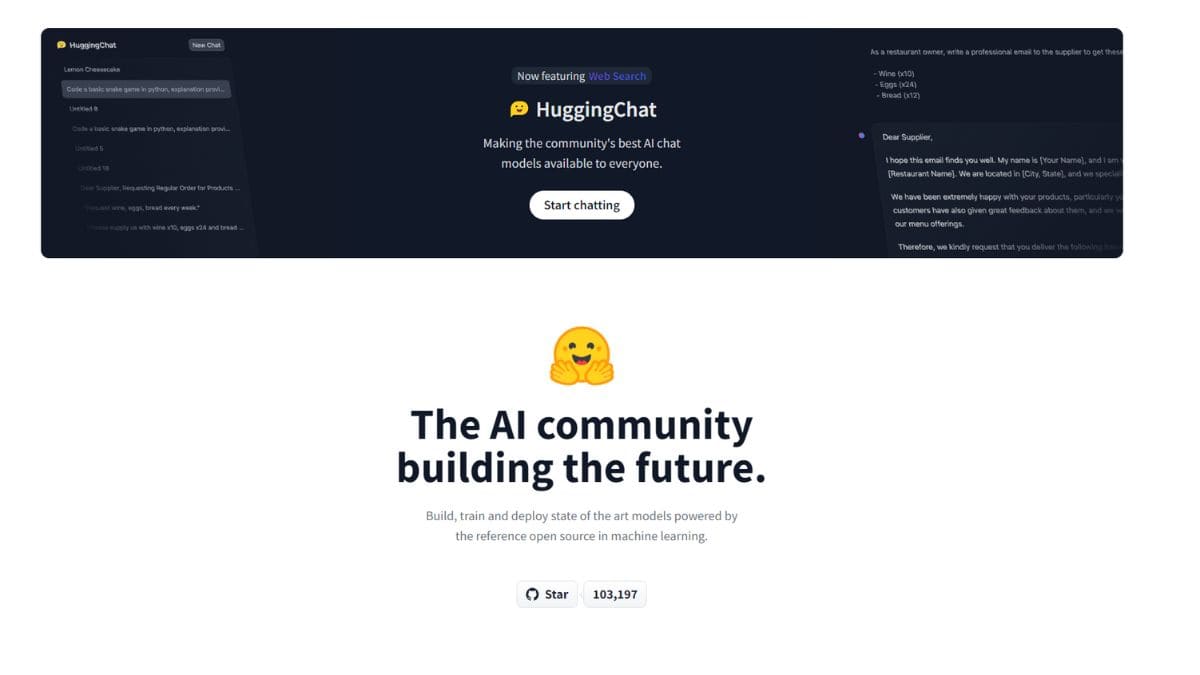,The Transformers library is beautifully integrated with the Hugging Face Hub through the model hub page, which contains documentation and an abundance of pre-trained models that can be easily downloaded and utilized for NLP applications and fine-tuning. This integration makes it even simpler for users to find and use the models and datasets they need, streamlining the entire process.,The model hub is packed with amazing pre-trained models such as BERT, GPT-2, DistilBERT, and XLNet, providing users with a wealth of opportunities for tasks like text classification, sentiment analysis, and question answering. Moreover, these models can be easily fine-tuned for specific tasks, allowing users to tailor their AI solutions to their unique requirements.,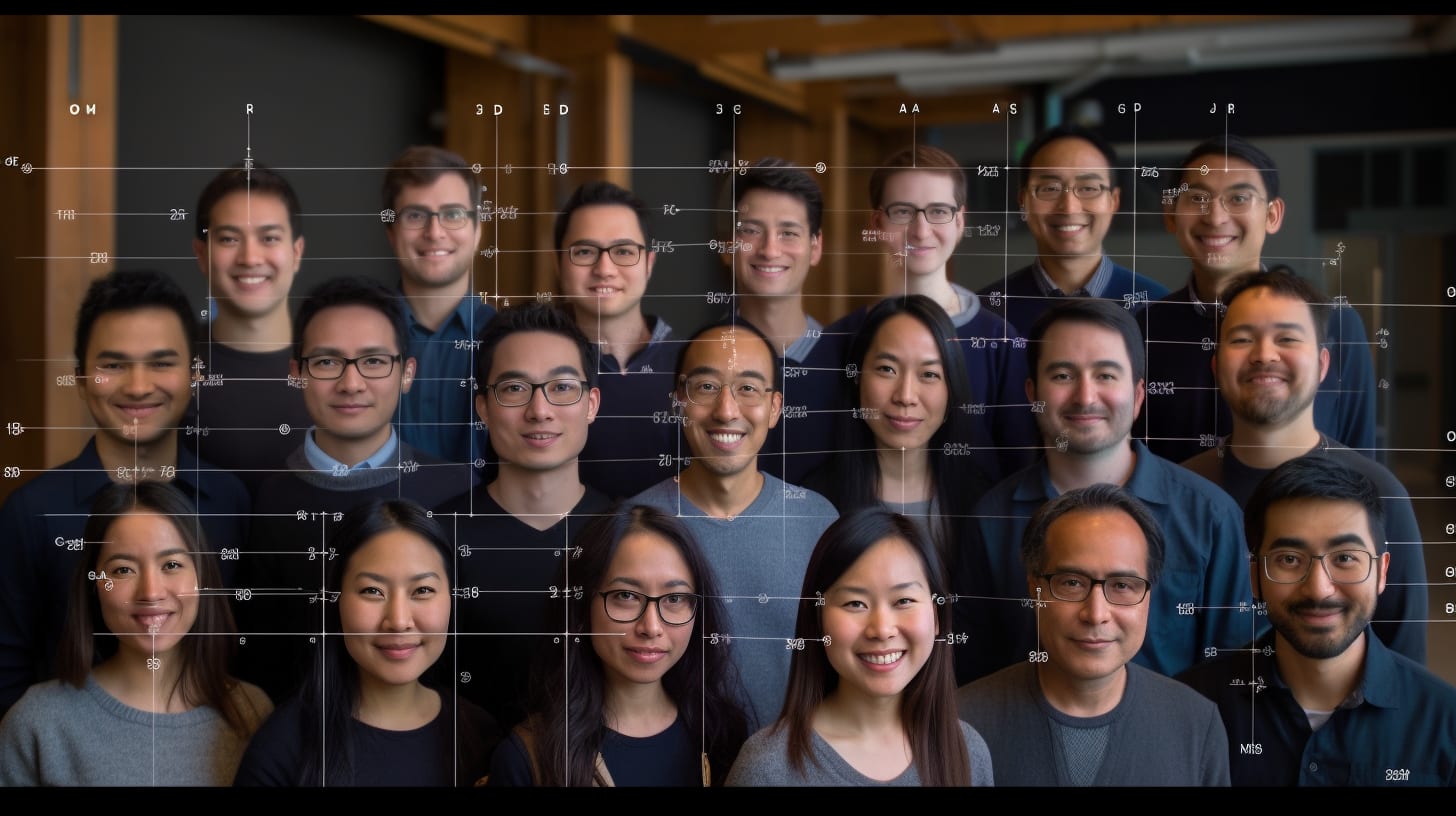,HuggingChat is revolutionizing conversational AI with its chat model capabilities, allowing users to make chat models and create custom chatbots with ease. Developed by Hugging Face, this innovative open-source conversational AI tool is based on the powerful Open Assistant Conversational AI Model created by the Large-scale Artificial Intelligence Open Network (LAION).,The Open Assistant Conversational AI Model is a powerful tool that enables users to create custom chatbots with ease. It is based on the latest advances in natural language processing and machine learning, and is designed to be useful.,HuggingChat is an amazing generative AI tool with 30 billion parameters that can effortlessly create text like summaries, essays, letters, and even have realistic conversations. Its capabilities span a wide range of applications, from straightforward Q&A to more intricate conversations, making it a versatile and powerful tool for creating custom chatbots.,This wide array of capabilities enables users to leverage HuggingChat for various purposes, such as enhancing customer service, streamlining workflows, and providing personalized user experiences. With HuggingChat, the possibilities for harnessing the power of conversational AI are virtually endless.,Implementing HuggingChat is a breeze thanks to the Hugging Face library and its support for natural language processing transformers libraries. By harnessing the power of these transformers, users can easily craft custom chatbot interactions tailored to their organization' specific needs and requirements.,The benefits of using HuggingChat are plentiful – improved customer service, increased efficiency, and cost savings are just some of the great advantages. Moreover, HuggingChat offers a platform for developers to create and refine their chatbot interactions, pushing the boundaries of what conversational AI can achieve.,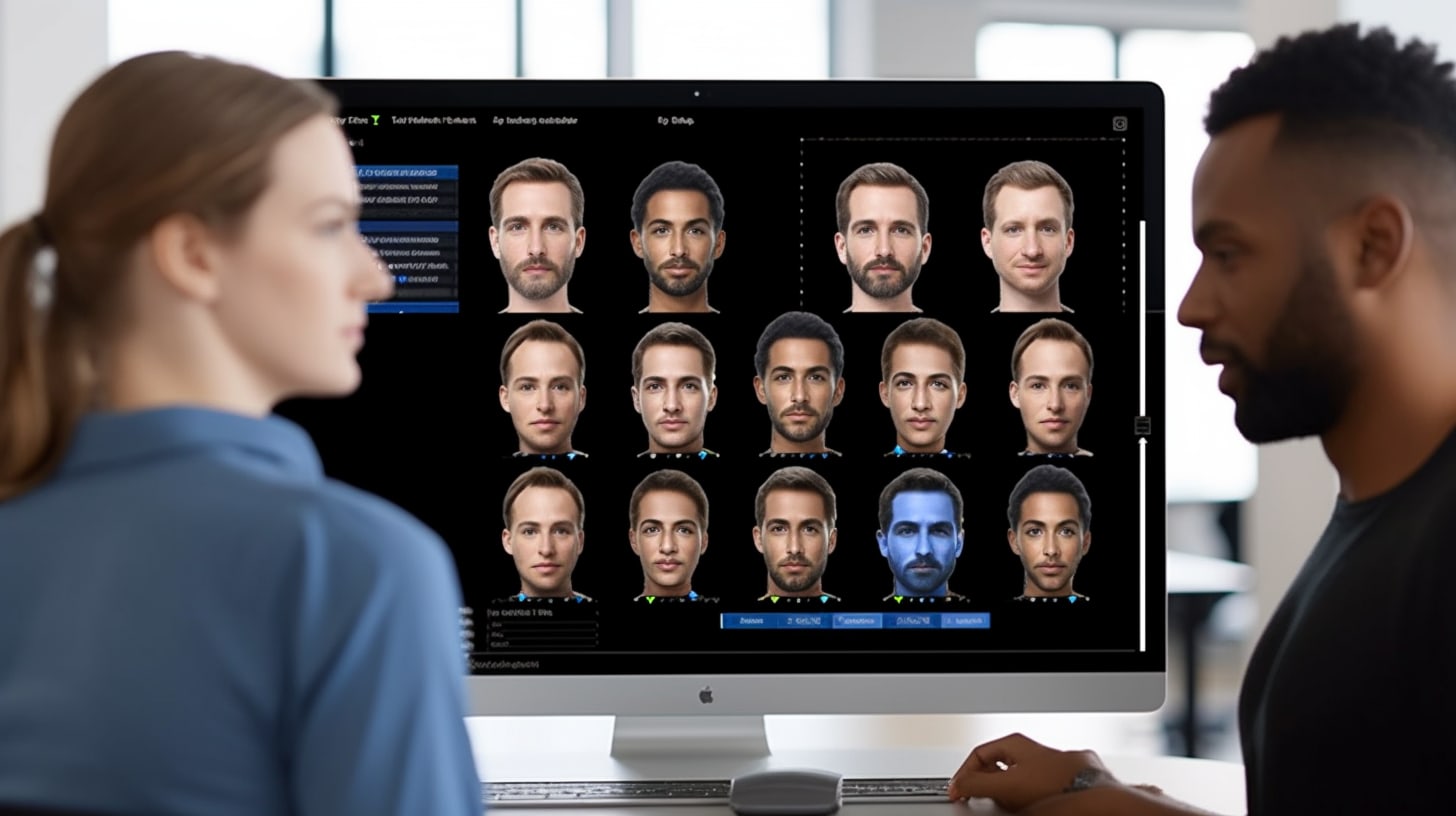,Hugging Face has made significant research contributions and advancements in NLP, including the development of DistilBERT, a lighter and faster BERT alternative, and meta-learning for language modeling.,These innovations showcase Hugging Face's commitment to pushing the boundaries of AI and ensuring that their platform remains at the cutting edge of future and of technology.,DistilBERT is an incredibly flexible and efficient Transformer model that is trained by distilling BERT base, boasting 40% fewer parameters than bert-base-uncased and running 60% faster while still maintaining over 95% of BERT's performance as measured on the GLUE language understanding benchmark. This remarkable alternative to BERT is designed to be smaller and faster while still delivering similar accuracy.,DistilBERT can be used for an array of thrilling tasks, such as question answering, natural language inference, and sentiment analysis. Its impressive performance combined with its reduced size and computational requirements make DistilBERT an invaluable resource for NLP practitioners looking to maximize the efficiency of their AI projects.,Meta-learning for language modeling is an exciting way to train them to adapt to new tasks with only a few labeled examples, significantly improving the performance of language models by training them on multiple tasks. This enables the model to gain valuable insights from different tasks and generalize more effectively, ultimately enhancing the efficiency of fine tuning or prompting large language models.,Examples of meta-learning for language modeling include the use of reinforcement learning to optimize the weights of a language model and the use of evolutionary algorithms to optimize the parameters of a language model. The benefits of meta-learning are manifold, including decreased labeled data requirements, shorter training times, and reduced computational resources needed for model training.,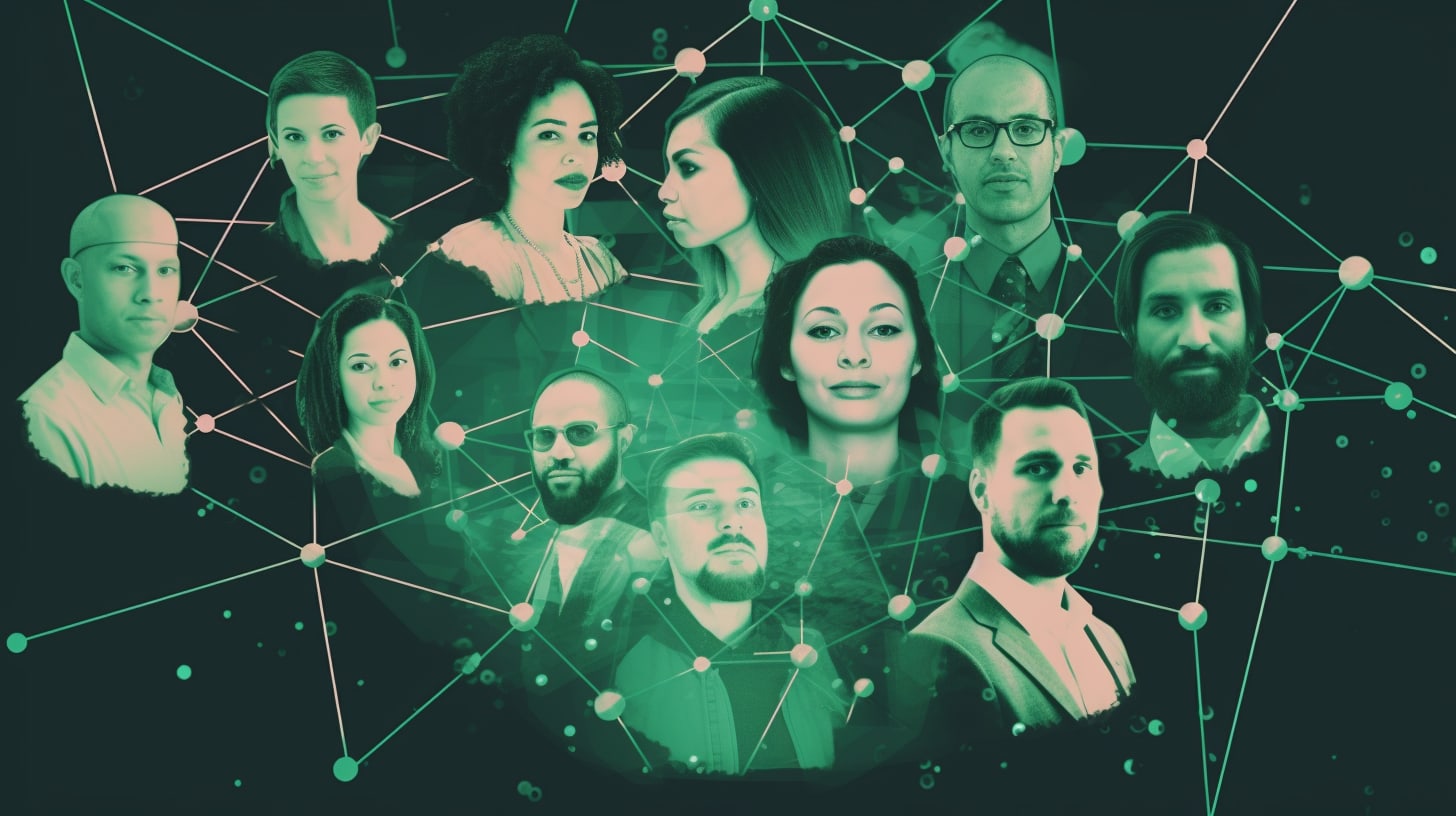,In this section, we will provide a practical guide to model training with Hugging Face, covering essential steps such as data preparation and tokenization, building and customizing models for specific requirements, and finally deploying trained models.,By following this guide, you can harness the power of Hugging Face's tools and resources to create, train and deploy your own machine learning models with ease.,Data preparation and tokenization is a crucial step in ensuring successful machine learning model performance. Hugging the crowd. Face streamlines this process through the use of their powerful Transformers AutoTokenizer function, which allows users to tokenize text for use in machine learning models with ease.,The Datasets library in Hugging Face further simplifies data preparation by allowing users to conveniently load a dataset in one line and effortlessly pre-process training data. With these tools at your disposal, you can focus on optimizing your models and achieving the best results in your AI projects.,Customizing models for specific requirements is an essential aspect of achieving optimal performance in your AI projects. By adjusting the hyperparameters of the model, such as the learning rate, batch size, and number of epochs, you can tailor your models to your unique needs.,Hugging Face's AutoModelForQuestionAnswering class and the Trainer API make it easy to optimize your model for specific tasks. With these powerful tools, you can ensure that your models are finely tuned to meet the demands of your applications and deliver exceptional results.,,Deploying trained models is an important step in bringing your AI projects to life. There are several exciting methods of deployment, such as creating a web service for prediction, container deployment, or using cloud services. The best way to deploy your trained models, however, is by using the Hugging Face Hub, which offers a streamlined and efficient approach to sharing your models with others and using them in production applications.,Standardizing the deployment process and monitoring the performance of your models are essential aspects of successful deployment. By diligently tracking the performance of your deployed models and addressing any issues that arise, you can ensure that your AI solutions remain effective, flexible and reliable in the ever-evolving world of technology.,Throughout this blog post, we have explored the vast and exciting world of Hugging Face and ai community building and its contributions to the AI landscape. From their comprehensive AI platform and Transformers library to their innovative tools like HuggingChat and DistilBERT, Hugging Face and ai community building has democratized AI and transformed the way we interact with machine learning models and datasets.,As we look towards the future, Hugging Face will undoubtedly continue to contribute and revolutionize the field of AI, breaking down barriers and empowering users to harness the power and knowledge of machine learning. With their commitment to innovation, collaboration, and open science, Hugging Face is truly unlocking the potential of AI and shaping the future of technology.

